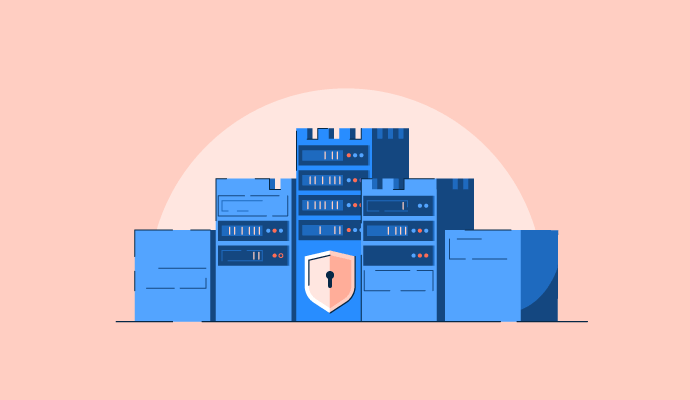What is a security protocol?
A security protocol is a series of communications, usually in a predetermined sequence, that achieve a specific security goal. Typically, these goals are related to authentication, integrity, or confidentiality online. Having security protocols in place keeps data protected and means that it can reach its intended destination safely.
While most web users don’t notice these protocols, they are in continual operation as users browse the internet, interact with content, and take actions online. For instance, opening a webpage and reading the content often has numerous security protocols running in the background.
Website owners use a range of security tools to keep their online content, and the visitors to their sites, free from harm. Server-based runtime application self-protection (RASP) software is one example of technology that businesses integrate with web firewalls to continually monitor for potential threats.
Types of security protocol
Depending on the type of data that needs protection, businesses have several options for the protocol they can use. Some of the most common are described here.
- Secure sockets layer (SSL) protocols maintain security between servers and web browsers by encrypting the data between parties. Most websites now use SSL certificates to show users that they’re safe. A padlock icon is usually visible in the browser tab to indicate the secure connection.
- Firewalls only allow data to pass through if it conforms to a predetermined set of rules or standards; they measure and compare incoming and outgoing traffic to achieve this. Without firewalls, devices are vulnerable to data breaches and distributed denial of service (DDoS) attacks by hackers.
- Simple mail transfer protocol secure (SMTPS) uses SSL protocols to protect the content of emails by encrypting message content before it’s sent. This ensures that only the intended recipient sees what’s inside the email.
- Virtual private networks (VPNs) provide users secure, encrypted internet connections. They’re typically used alongside other security protocols when browsing public Wi-Fi networks.
Basic elements of security protocols
Web security protocols can be designed for a range of functions, but most protocols belong to one of four categories.
- Access control authenticates user identity and access level.. Authentication can happen at various permission levels, usually set by a system or network administrator.
- Encryption algorithms change plain text pass into ciphertext or encrypted text. This stops hackers and cybercriminals from being able to read the data.
- Key management protocols can create new keys once data has been encrypted and then distribute and maintain them across the network.
- Message integrity allows administrators to control who can modify data between two systems or people so that no unauthorized users or devices can tamper with the information.
Benefits of security protocols
Protecting data should always be a top priority for any business. Using security protocols on networks and devices is beneficial for:
- Improving security and reliability. Protocols mean that unauthorized users and hackers cannot intercept data and see to it that the information is transferred quickly without being corrupted.
- Increasing privacy. No one can see encrypted data except the intended recipient. This makes data transferring a more private experience for both end users.
- Enhancing user authentication. Many security protocols rely on authentication techniques to verify that the users on either end are who they say they are. By confirming this information upfront, it’s much harder for potential cyber criminals to access any of the data being transferred.
- Applying better technology integration. Using security protocols is now an industry standard for any online business. Users expect to see SSL certificates when browsing, while applications and plugins that work alongside web-based technology often require protocols to be in place to work effectively.
Best practices for security protocols
When implementing new security protocols across an organization, companies should look to establish best practices that include:
- Keeping software updated. Hackers frequently abuse vulnerabilities in software to gain access to data, even with protocols in place. It’s always best to update software to the latest version, as these may have important security patches that help protocols work more effectively at stopping cyber criminals.
- Enforcing strong password policies. Any organization that wants to protect their data should be using strong passwords. Companies ought to consider adding two-factor authentication (2FA) requirements for all users, making it even harder for hackers to bypass security protocols and access data.
- Giving administrators access control. By giving IT administrators control over who can do what on the network, data is better protected from unauthorized users. This is where protocols like firewalls are beneficial. Rules can be established that allow certain users a set level of access to encrypted data, while mitigating the risks of cyberattacks.
- Continually monitoring network activity. Responding to any threats as they occur is essential for protecting private information. Network security protocols should be in place at all times, and automated monitoring systems must be running continually to identify any suspicious activity on the network.
Protect your business data and customer information from cyber criminals and monitor for potential threats with network detection and response (NDR) software.

Holly Landis
Holly Landis is a freelance writer for G2. She also specializes in being a digital marketing consultant, focusing in on-page SEO, copy, and content writing. She works with SMEs and creative businesses that want to be more intentional with their digital strategies and grow organically on channels they own. As a Brit now living in the USA, you'll usually find her drinking copious amounts of tea in her cherished Anne Boleyn mug while watching endless reruns of Parks and Rec.

